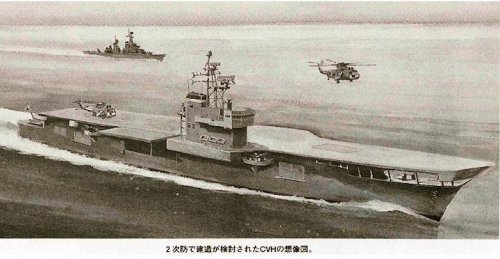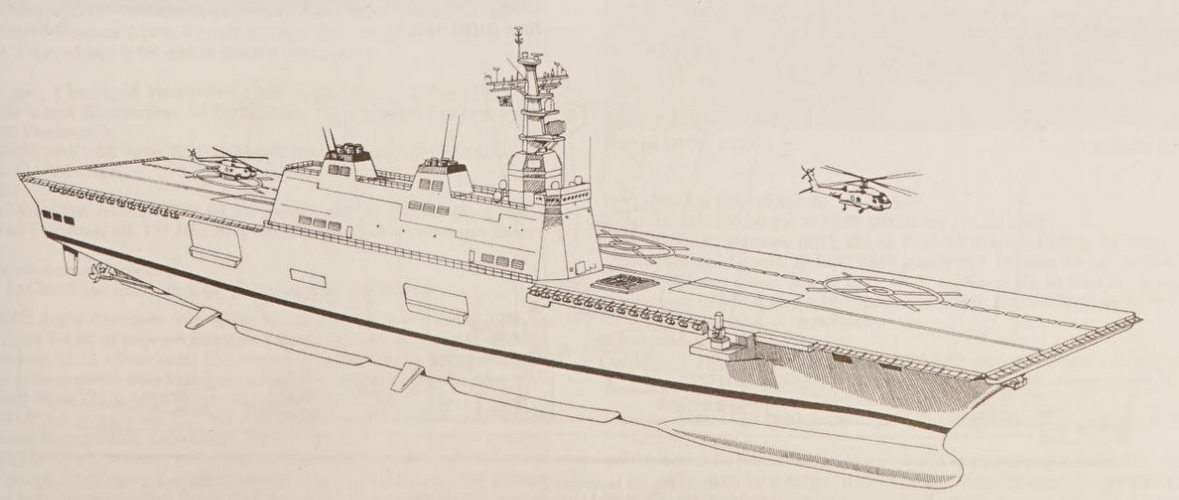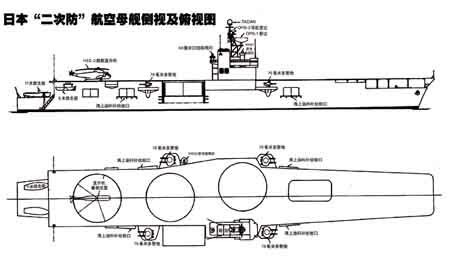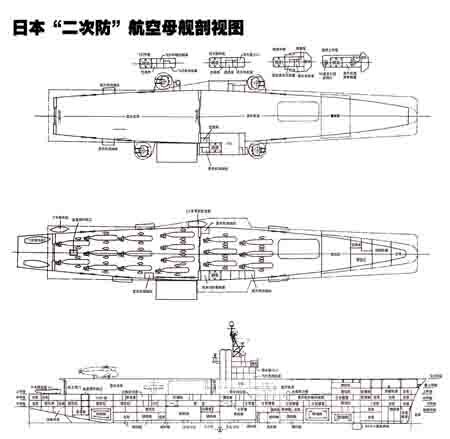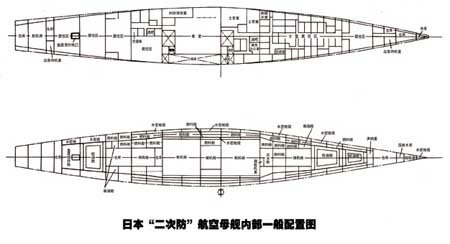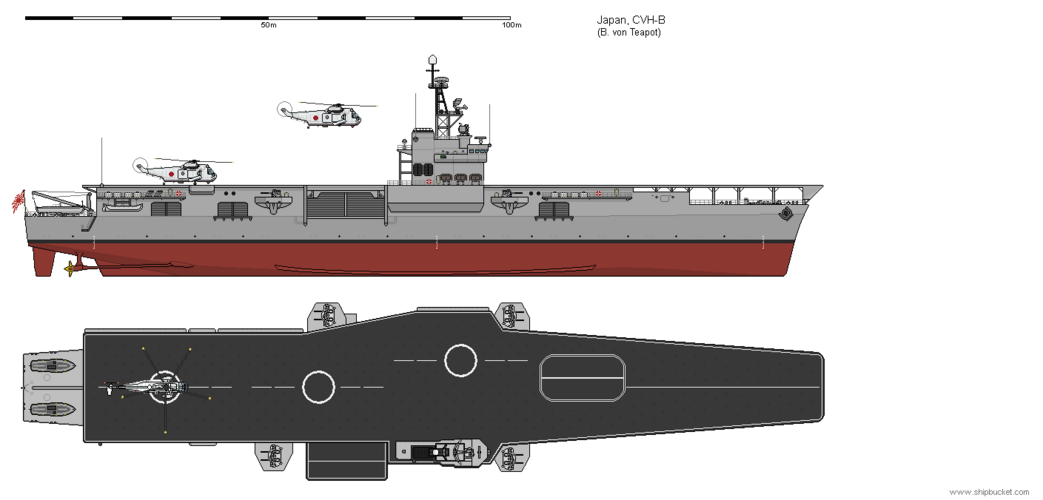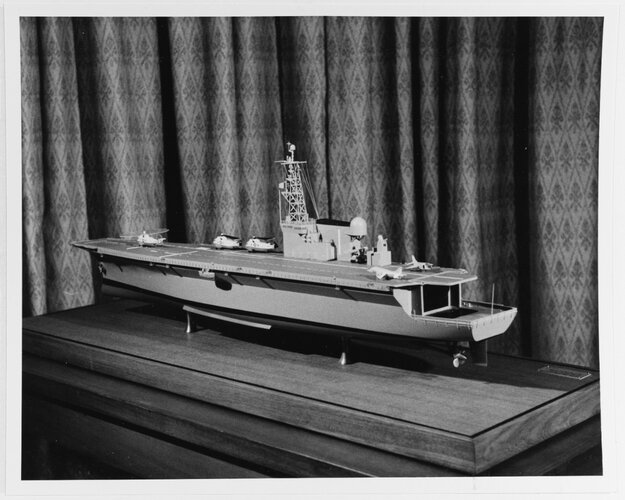From Ronnie Serrano on the "Project Terminated" page on Facebook:
Source:
https://www.facebook.com/photo.php?fbid=876967599032670&set=gm.646696872124265&type=1&theater
Source:
https://www.facebook.com/photo.php?fbid=876967599032670&set=gm.646696872124265&type=1&theater
Another surprise and rare find I've ran across today is that Japan proposed a helicopter carrier called the CVH which was planned back in early-1960's. There were two variants of the CVH like the CVH-A which was an ASuW carrier capable of carrying 18 helicopters mostly the SH-3J's and four S-2 Trackers. Another one was the CVH-B which was pretty much pure helicopter carrier which carried only 18 helicopters. However, in 1961, the Japanese decided to go with the CVH-B variant instead since it was cheaper and easier to maintain. Despite that, U.S and the Japanese Diet was against the helicopter carrier proposal because pacifist constitution and concerns that a arms race might start up in the region. So the CVH-B project was dropped and decided to developed a helicopter destroyers instead like the Haruna class instead.

